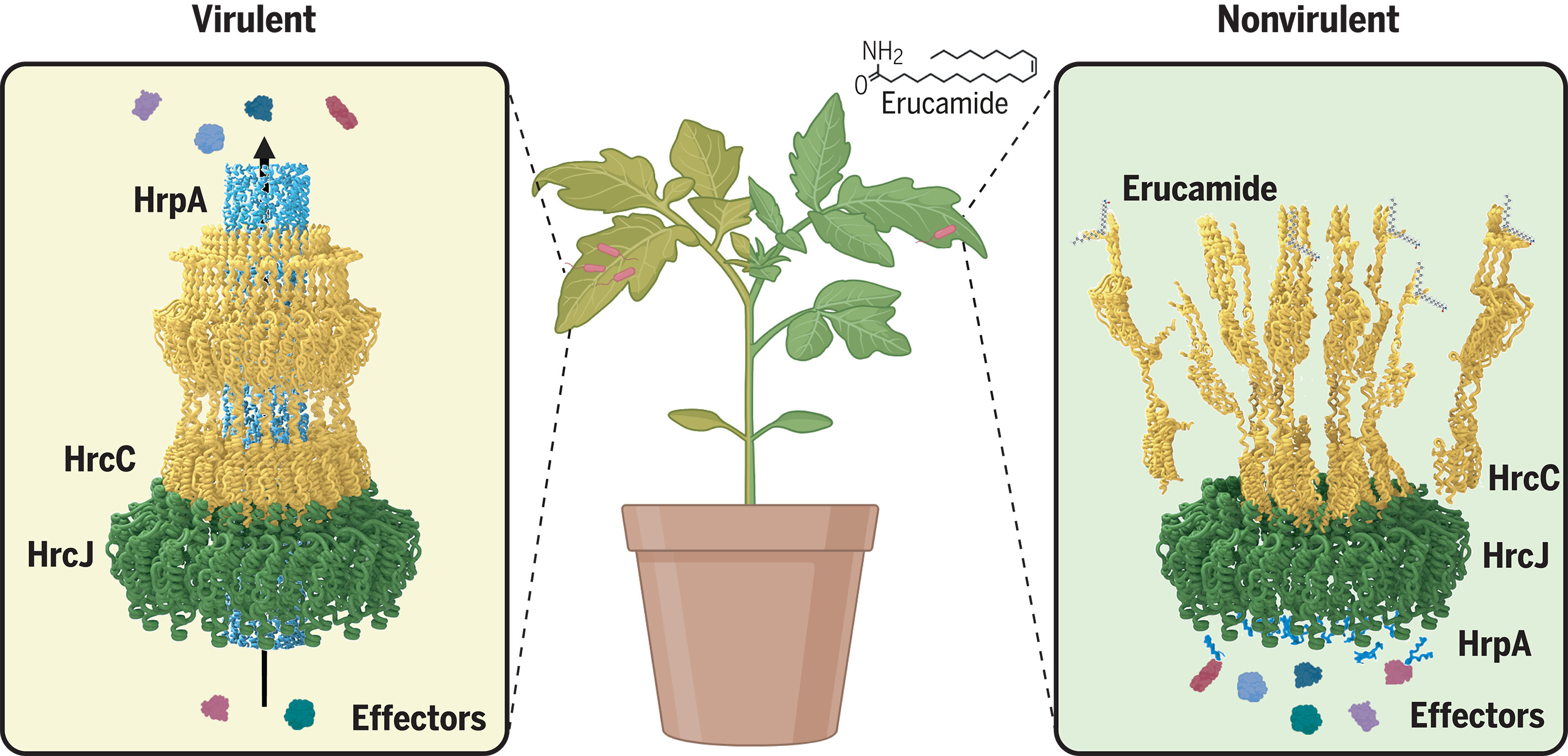A widespread plant defense compound disarms bacterial type III injectisome assembly
Pei Miao†, Haijun Wang†, Wei Wang†, Zhengdong Wang, Han Ke, Hangyuan Cheng, Jinjing Ni, Jingnan Liang, Yu-Feng Yao, Jizong Wang, Jian-Min Zhou*, Xiaoguang Lei*
Science, 2025, 387, eads0377.
Plants employ immune receptors to perceive pathogen-associated molecular patterns (PAMPs) to trigger immune signaling. How plants impede pathogen progression following successful signal transduction, however, has remained largely elusive. Plants produce diverse secondary metabolites, called phytoalexins, in response to pathogen infections. Various phytoalexins show strong lineage specificity and are believed to act upon microbes by growth inhibition or toxicity. Whether any phytoalexins protect plants by targeting specialized virulence machinery of pathogens has not been well studied. For instance, numerous gram-negative bacterial pathogens employ the type III secretion system (T3SS), a multiprotein injectisome, to deliver virulence proteins into animal and plant host cells for pathogenesis. Immune-activated plants are known to possess activity that inhibits the bacterial T3SS, although the nature of this activity and underlying mechanism remain unknown. This immune-induced anti-T3SS activity serves as a model to investigate potential antivirulence phytoalexins in plants.
